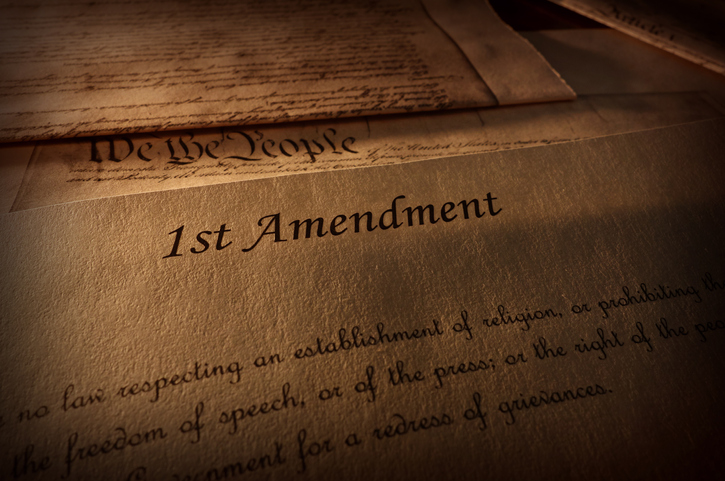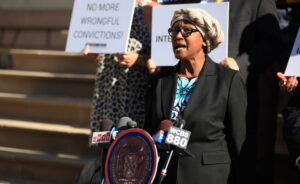
Carsen v. Makin
By Nathan Rizzuti
At the heart of America’s intercourse between religion and politics, you’ll find references to Thomas Jefferson’s 1802 letter to the Baptist Association of Danbury, Connecticut. In his brief message, the President responds to Baptist fear of persecution from Connecticut’s established state religion, Congregationalism. Jefferson, attempting to put fears to rest, wrote, “…I contemplate with sovereign reverence that act of the whole American people which declared that their legislature should ‘make no law respecting an establishment of religion, or prohibiting the free exercise thereof,’ thus building a wall of separation between Church & State.”
Although the United States ratified its constitution in 1788, establishing that “Congress can make no law respecting an establishment of religion,” almost every one of the 13 colonies remained under the prior influence of state religions into the 19th century. Connecticut is only one such example.
These state religions existed before the United Stated divorced itself from British rule; most colonies erected a state-supported religion, codifying a sect of legitimate Christianity, thereby painting all others as infidels. States like Virginia even instituted brutal punishments for those who didn’t attend Sunday church service. And documents like the Virginia Slave Code of 1705 issued that any non-christian servants brought over from the old world were considered chattel slaves.
For going on two centuries, Jefferson’s note to the Baptists at Danbury — always with an emphasis on the last ten words — has been leveraged by the US Supreme Court to fortify the separation of church and state. But last week, the Roberts court affirmed Carson vs. Makin. This ruling — which strikes down a Maine law stating that public tuition assistance cannot be used for religious schools on the grounds of violating the Free Exercise Clause of the First Amendment — falls as the heaviest domino in a series of Supreme Court decisions that continue battering at the metaphoric wall established in the First Amendment.
US President’s Interpretation of the Free Exercise Clause
Although baptized into the Anglican church as a child, Jefferson never held a firm belief in any Christian franchise. As a result, some choose to dismiss Jefferson’s exposition on the First Amendment as his personal opinion. Still, the Jeffersonian devotion to the separation of church and state is a line that can be traced through almost every American Presidency. The philosophy is also further established in the Virginia Statutes for Religious Freedom and the Treaty of Tripoli.
Take, for example, the seventh president. President Andrew Jackson was a devout Presbyterian who leaned on his denomination’s teachings for moral guidance and made clear his staunch support of keeping the hand of religion and the hand of government far apart. In 1832, like Jefferson, he authored his own note to a group of concerned believers. This message responded to a request from the Synod of the Reformed Church of North America, asking that Jackson proclaim a federally-recognized day of “Fasting, Humiliation, and Prayer.” Jackson wrote:
“Whilst I concur with the synod in the efficacy of prayer and in the hope that our country may be preserved from the attack of pestilence … I am constrained to decline the appointment of any period or mode as proper for the public manifestation of this reliance. I could not do otherwise without transcending the limits prescribed by the Constitution for the President and without feeling that I might in some degree disturb the security which religion nowadays enjoys in this country in its complete separation from the political concerns of the General Government.”
Believer or non-believer, American executive after American executive knew very well to express admiration for faith, and its importance to American life, while exercising their administrative duty of keeping politics and religion in a state of abstinence.
Public Education In the United States
Implementing a public education system in America is one of the country’s greatest achievements in addition to one of its greatest conflicts. And it should be unsurprising that at the center of this conflict appears the vocal throngs of America’s many religions. From the rabid parental concern over book-bans, to the anti-Darwinists, to anti-bussing and segregationists, America has always faced firm opposition from religious fundamentalists trying to influence the schoolroom. This has been true since the country’s founding.
After the foundations of the United States were laid, many preexisting institutions and philosophies of colonial life had to be revisited, including the 17th and 18th-century frameworks for education. In 1647, Massachusetts (another officially Congregationalist territory) passed the Olde Deluder Satan Act. The law’s intention was straightforward: to oppose the powers of “ye old deluder, Satan” and his cunning scheme “to keepe men from the knowledge of ye Scriptures.” This law required children in towns of over 50 families to read, write, and learn the bible. Soon, every state aside from Rhode Island adopted similar educational principles to satisfy the trappings of their specific state religion.
These sparse sectarian schoolhouses remained well past the American Revolution. It wasn’t until Horace Mann, in 1838, that American education matured into a more systemic approach.
Mann is often considered the founder of American public education. He examined the condition of American schools with ferocity, ultimately forming the country’s first structured philosophy for civic education. He came up with six main scholastic principles: one is that public funding should sustain education, and another is that all instruction ought to be non-sectarian.
From Mann’s non-sectarian approach, publicly funded education gradually moved into the tradition of secular neutrality. It began with the removal of all protestant denominational teaching. Then, as the country developed greater religious and cultural diversity in the late 19th and early 20th centuries, biblical teaching and Christian expression faded from the public schoolroom.
Throughout this period are a deck of supreme court rulings, such as Everson vs. Board of Education (1947), laying out legal precedent stating that the wall of separation applies to education just as much as it does to any other element of American civic life.
Carson v. Makin
At present, this president is chipping away, and the recent Supreme Court ruling in Carson v. Makin redefines how public funds are appropriated to religious schools. And since 2017, there’ve two cases to crack the door open for such a ruling.
Trinity Lutheran Church of Columbia v. Comer (2017) established that available public benefits could not be denied to an institution solely based on its religious status. Another, Espinoza v. Montana (2020), determined that state-funded scholarship programs must also be made available to students who attend private religious schools, given that they are available to students of non-sectarian private schools.
In these past two cases, as well as Carson v. Makin, the majority opinion ruled that refusal to include religious schools in state-funded tuition assistance programs violated the First Amendment’s Free Exercise Clause. They argued that the institutions in question underwent discrimination solely based on religious status.
Within this ruling are some critical differences from those of recent cases. The first is that the schools in question, Bangor Christian Schools and Temple Academy, are not merely religiously affiliated institutions but uphold doctrinal and denominational beliefs at the core of their educational platforms. So, this decision will require taxpayers of all faiths to help fund these schools’ discriminatory policies–such as those denying the entry or employment of LGBTQ+ students or teachers. Or, those that expel any student that’s not a professing Christian.
And this is where the severe overstep of the Roberts court, outlined by Breyer and Sotomayor in their dissent, takes the embrace of church and state to new levels. Whereas prior cases argued that public funds couldn’t be denied based on religious status, this case argues that public funds must be made available for sectarian religious use.
Sources:
- Jefferson’s Letter to the Baptist Association of Danbury, Connecticut
- The Virginia Slave Code of 1705
- Supreme Court Ruling: Carson vs. Makin
- Andrew Jackson’s Letter to the Synod of the Reformed Church of North America
- Olde Deluder Satan Act of 1647
- Horace Mann’s Six Main Scholastic Principles for Civic Education
- Everson vs Board of Education
- Trinity Lutheran Church of Columbia vs Comer
- Espinoza vs Montana
- The Supreme Court’s New Religious Liberty Case Could Destroy Public Education





